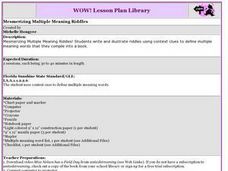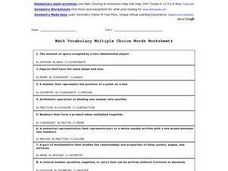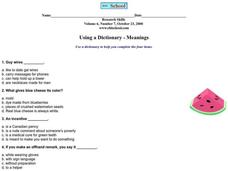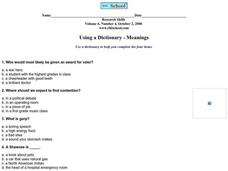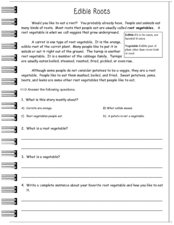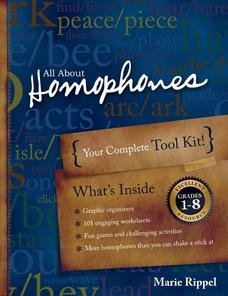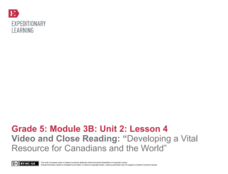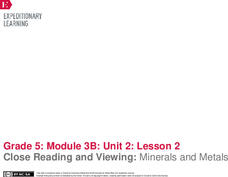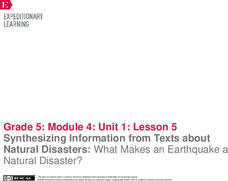Curated OER
Close Reading Passages of Literature
Encourage kids to think deeply about what they are reading with five thought-provoking questions about one passage. After choosing a passage that is intriguing or confusing to them, learners write a summary, explain what they like or...
Curated OER
Using Multiple Meaning Words
Second graders explore multiple meaning words. In this language arts lesson plan, 2nd graders read "Amelia Bedelia Goes Camping." Students discuss the different meanings of the words in the story. Students complete a worksheet.
Curated OER
Mesmerizing Multiple Meaning Riddles
Students write and illustrate riddles using context clues to define multiple meaning words that they compile into a book. They read the book, Miss Nelson Has a Field Day, and observe the many different multiple meaning words...
Curated OER
Words With Multiple Meanings #7
In this words with multiple meanings #7 worksheet, learners use 4 pairs of words with multiple meanings in a vocabulary game.
Curated OER
Words with Two Meanings
In this words with multiple meanings learning exercise, students find two definitions of 7 different words and then write a sentence for each meaning.
Curated OER
Math Vocabulary Multiple Choice Words Worksheet
In this math vocabulary worksheet, students complete multiple choice problems where they match the correct math vocabulary word to its definition. Students complete 15 questions.
Curated OER
The Lion, the Witch, and the Wardrobe: Vocab Squares
Creatively develop and reinforce new vocabulary from the book, The Lion, the Witch, and the Wardrobe by C.S. Lewis, using these vocabulary squares. Each square is divided into four quadrants asking scholars to input the word, a...
Curated OER
What sayings mean
In this what sayings mean worksheet, students fill in the blanks to sentences about what certain sayings really mean. Students complete 10 multiple choice questions.
Curated OER
Using a Dictionary--Meanings
In this using a dictionary worksheet, students utilize a dictionary to look up the meanings to four words. Students choose the best definition for each word out of a multiple choice selection and then put their answers on the lines...
Curated OER
Using a Dictionary--Meanings
In this meaning of words worksheet, students utilize a dictionary to look up four words and choose through multiple choice answers the best definition for each word.
Curated OER
Using a Dictionary--Meanings
In this dictionary learning exercise, students look up four words to find the definition of each one. Students then choose which multiple choice definition best defines each word and place their choices on the lines provided.
Curated OER
Sight Word Matching
Students explore English by participating in a match game. In this sight word vocabulary lesson, students read the book The Cat's Surprise and identify the sight words which they are unfamiliar with and need to review. Students identify...
Curated OER
Mr. Payne Word Search Puzzle
In this language arts learning exercise, students study 10 words in a word bank, then locate them in a word search puzzle. The words appear to be related to algebra; the meaning of the title is not known. There is one misspelled word in...
Curated OER
Symbols Communicate Without Words
Students write different symbols we use in writing out in their word form. In this word symbols lesson plan, students practice writing out what the symbols represent. For example the symbol % stands for 'percent'.
Curated OER
Edible Roots
In this edible roots activity, students read a passage, then complete a set of 4 comprehension questions, 1 multiple choice and 3 short answer.
Curated OER
Sixth Grade Reading Quiz
In this reading instructional activity, 6th graders answer multiple choice questions about passages they read, word parts, and more. Students complete 9 problems.
Curated OER
Intervals
In this intervals worksheet, high schoolers determine the coordinates at a point of inflection. They compute the deritative of a function and sketch curves that satisfy given conditions. Students solve equations using the...
Curated OER
James and The Giant Peach Vocabulary Building Activities
Reading literature is one of the best ways for kids to build a strong vocabulary while honing in on their comprehension skills. These vocabulary activities go along with the wonderful book, James and the Giant Peach. The children will...
Houghton Mifflin Harcourt
Special Friends: English Language Development Lessons (Theme 9)
Enhance language proficiency with a Special Friends themed English language development unit. Each lesson follows a listen, speak, move, and/or look routine that is guaranteed to get your scholars discussing topics such as animal...
EngageNY
Mid-Unit Assessment: Text-Dependent and Short Answer Questions: Excerpts from “A Limited Supply”
There's no such thing as an unlimited resource. Scholars complete a mid-unit assessment by reading A Limited
Supply. They answer text-dependent questions and complete a graphic organizer about key terms in the text.
Curated OER
All About Homophones
Put the fun back in reading fundamentals with an interactive set of lessons about homophones. Learners of all ages explore the relationships between words that sound the same but have different meanings, and complete a...
EngageNY
Video and Close Reading: “Developing a Vital Resource for Canadians and the World”
Scholars watch Developing a Vital Resource for Canadians and the World to learn about the supplement potash that helps plants grow. They watch the video several times, completing a note catcher to record key ideas along the way....
EngageNY
Close Reading and Viewing: Minerals and Metals
How easy is it to live off the land? Scholars read Minerals and Metals in Your Life and discuss how Canada's natural resources meet the needs of the people. Pupils watch a brief video and discuss the gist of the text and video. They...
EngageNY
Synthesizing Information from Texts about Natural Disasters: What Makes an Earthquake a Natural Disaster?
Are all disasters natural? Scholars reread Earthquakes! to determine what classifies these events as a natural disaster. They label earthquake facts as N for natural or D disaster to support their ideas. They then discuss academic...




